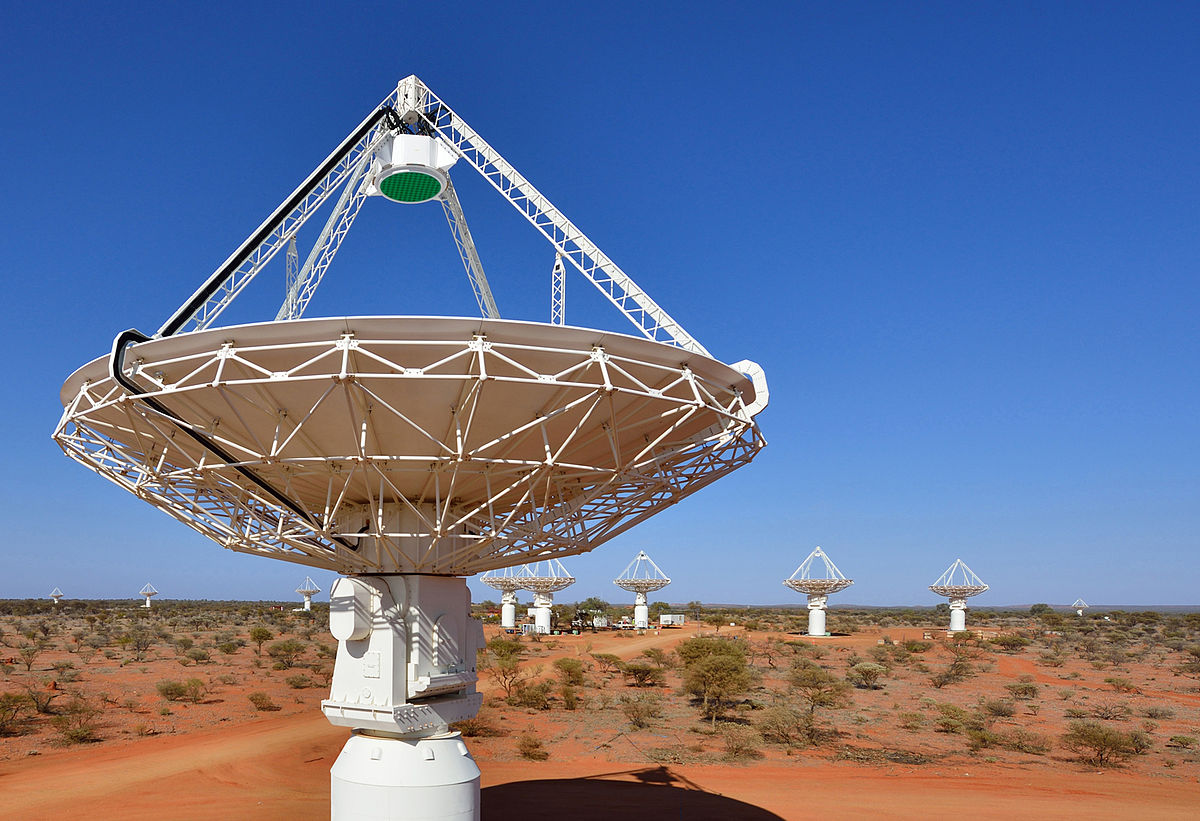ASKAP
An array of radio telescopes from the Murchison Radio Astronomy Observatory (MRO) is Australian Square Kilometer Array Pathfinder (ASKAP). It is operated by the Commonwealth Scientific and Industrial Research Organization (CSIRO) and is part of the Australian National Telescope Facility. Construction began late in the year 2009 and the first light was in the year 2012.
Highlights
ASKAP consists of 36 identical satellite dishes, each 12 meters in diameter, which are the only astronomical interferometer that works together with a total collection area of approximately 4,000 square meters. Each antenna is equipped with a phase matrix feed (PAF), which significantly increases the field of view. This design offers both high lifting speed and high sensitivity. The installation of ASKAP began as a demonstrator of technology for the International Square Kilometer Array, a planned radio telescope that will be more sensitive and larger. The ASKAP location was selected as one of the SKA’s two central locations.
Development of ASKAP
The construction and development of ASKAP was led by CSIRO Astronomy and Space Science (CASS) in collaboration with scientists and engineers from Canada, Netherlands and the US, as well as industrial partners in China and researchers from Australian universities. ASKAP was designed as a synoptic telescope with a large field of view, high measurement speed, large spectral bandwidth and a large number of simultaneous baselines. The biggest technical challenge faced was the construction and design of the power supplies which is phased, and had not previously been used for radio astronomy, as well as the highest data rate of a radio telescope to date.
Location of ASKAP
ASKAP is located in the Murchison district of Western Australia, an area that is extremely radio quiet due to its low population density and the resulting lack of radio interference that would otherwise interfere with signals. The quiet radio location is recognized as a natural resource and is protected by a series of regulations from the Commonwealth of Australia and the Western Australian state government.
The ASKAP data is transmitted to a supercomputer which is situated at the Pawsey Supercomputing Center located in Perth. Data is processed in near real time by a pipeline processor running specially developed software. All data is made available to the public after quality checks performed by ASKAP’s ten scientific survey teams.


